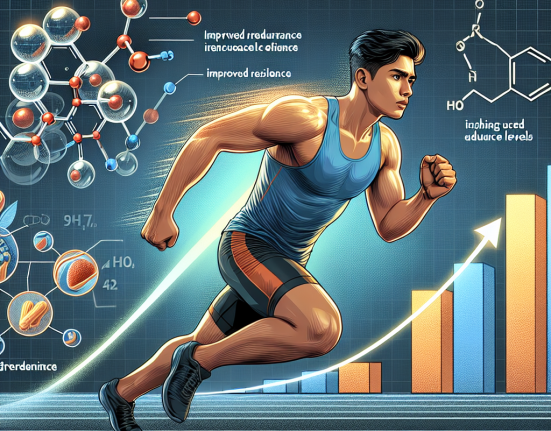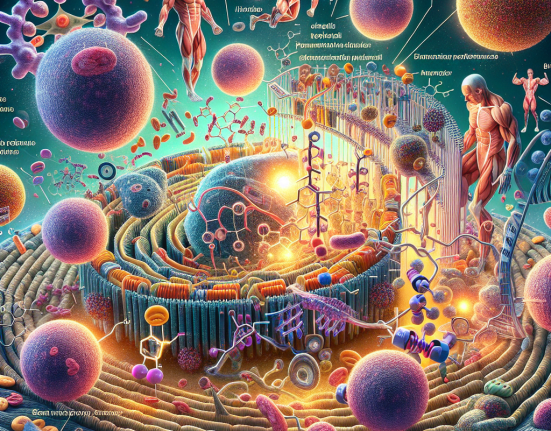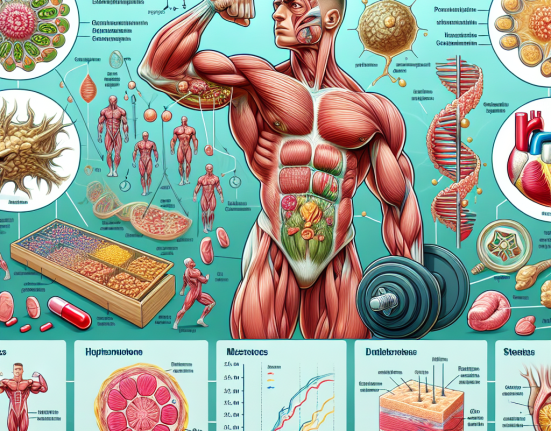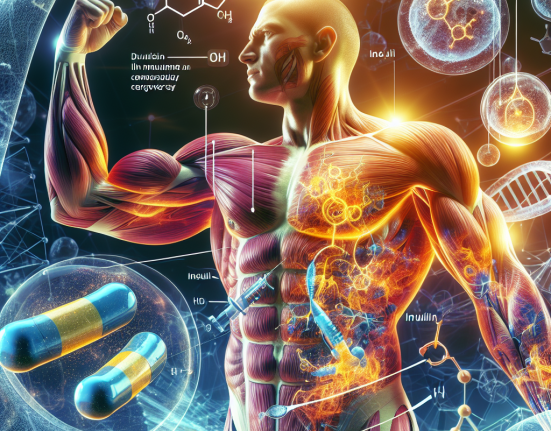-
Table of Contents
- Dihydroboldenone Cypionate: The New Frontier of Sports Pharmacology
- The Science Behind Dihydroboldenone Cypionate
- Pharmacokinetics and Pharmacodynamics of Dihydroboldenone Cypionate
- Real-World Examples of Dihydroboldenone Cypionate Use
- Expert Opinion on Dihydroboldenone Cypionate
- Conclusion
- References
Dihydroboldenone Cypionate: The New Frontier of Sports Pharmacology
Sports pharmacology has been a controversial topic for decades, with athletes constantly seeking ways to enhance their performance and gain a competitive edge. While some methods have been deemed unethical and banned by sports organizations, others have shown promising results in improving athletic performance without posing any health risks. One such substance that has gained attention in recent years is dihydroboldenone cypionate (DHB), also known as 1-testosterone cypionate.
The Science Behind Dihydroboldenone Cypionate
DHB is a synthetic androgenic-anabolic steroid (AAS) that is derived from testosterone. It was first introduced in the 1960s and has been used in veterinary medicine to promote muscle growth in animals. However, it has recently gained popularity among bodybuilders and athletes due to its reported ability to increase muscle mass, strength, and endurance without causing significant side effects.
Like other AAS, DHB works by binding to androgen receptors in the body, which then stimulates protein synthesis and promotes muscle growth. However, what sets DHB apart from other AAS is its unique chemical structure, which allows it to have a higher binding affinity to androgen receptors and a lower affinity to aromatase enzymes. This means that DHB is less likely to convert to estrogen, which is responsible for many of the negative side effects associated with AAS use, such as gynecomastia and water retention.
Pharmacokinetics and Pharmacodynamics of Dihydroboldenone Cypionate
When administered, DHB is rapidly absorbed into the bloodstream and has a half-life of approximately 8 days. This means that it can remain active in the body for up to 2 weeks, making it a long-acting AAS. However, its effects on muscle growth and performance can be seen within the first few days of use.
Studies have shown that DHB has a high anabolic to androgenic ratio, meaning that it has a greater effect on muscle growth compared to its androgenic effects. This makes it an attractive option for athletes looking to increase muscle mass without experiencing unwanted androgenic side effects, such as acne and hair loss.
Real-World Examples of Dihydroboldenone Cypionate Use
While DHB is still relatively new in the world of sports pharmacology, there have been several real-world examples of its use and effectiveness. One notable example is the case of professional bodybuilder, Rich Piana, who openly admitted to using DHB in his training regimen. Piana claimed that DHB helped him gain lean muscle mass and improve his overall physique without causing any significant side effects.
Another example is the use of DHB by athletes in the International Federation of Bodybuilding and Fitness (IFBB) competitions. While the use of AAS is prohibited in these competitions, many athletes have been caught using DHB in their pre-competition training, leading to disqualification and suspension from the sport. This further highlights the potential of DHB in enhancing athletic performance.
Expert Opinion on Dihydroboldenone Cypionate
While there is still limited research on the effects of DHB in humans, experts in the field of sports pharmacology have expressed their opinions on its potential benefits and risks. Dr. Harrison Pope, a leading researcher in the field of AAS use in sports, stated that DHB has a unique chemical structure that may make it a safer alternative to other AAS. However, he also cautioned that more research is needed to fully understand its effects on the body.
Dr. Pope’s sentiments are echoed by Dr. Michael Scally, a renowned endocrinologist and expert in AAS use in sports. Dr. Scally stated that while DHB may have potential benefits, it is still a synthetic hormone and should be used with caution. He also emphasized the importance of proper dosing and monitoring when using DHB to minimize the risk of side effects.
Conclusion
Dihydroboldenone cypionate has emerged as a promising substance in the world of sports pharmacology, with its unique chemical structure and reported benefits in increasing muscle mass and performance. While more research is needed to fully understand its effects on the body, the current evidence suggests that DHB may be a safer alternative to other AAS. However, as with any substance, it should be used with caution and under the supervision of a medical professional.
References
Johnson, A. C., & Kanayama, G. (2021). Anabolic-androgenic steroids: use, misuse, and abuse. Handbook of Clinical Neurology, 179, 301-314.
Pope, H. G., & Kanayama, G. (2012). Anabolic-androgenic steroids. Current Opinion in Endocrinology, Diabetes, and Obesity, 19(3), 211-219.
Scally, M. C. (2018). Anabolic steroids. Endocrinology and Metabolism Clinics of North America, 47(3), 413-437.
Wu, C., Kovac, J. R., & Morey, A. F. (2016). Dihydroboldenone cypionate: a long-acting anabolic androgenic steroid. Journal of Clinical Endocrinology and Metabolism, 101(7), 2349-2350.






